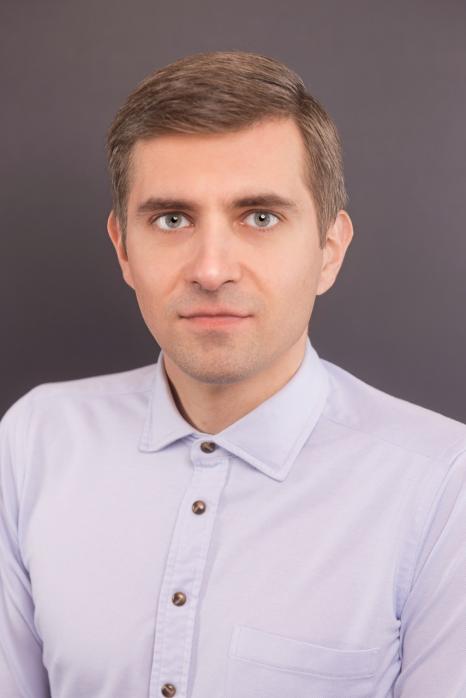
Kęstutis Česnavičius, tackling mathematical conjectures
Kęstutis Česnavičius is a mathematician and CNRS research fellow at the Mathematics Laboratory of Orsay (LMO – Univ. Paris-Saclay/ National Centre for Scientific Research, CNRS). A specialist in arithmetic geometry, he is more specifically interested in p-adic Hodge theory, the arithmetic of elliptic curves and problems on reductive groups. He won the 2023 Jacques Herbrand Prize, awarded by the French Academy of Sciences for solving the Auslander-Goldman, Grothendieck and Gabber purity conjectures.
It is often said that there are two kinds of mathematicians: those who build theories and those who solve problems. There is no doubt that Kęstutis Česnavičius willingly places himself into the second category, although he admits that this distinction is slightly exaggerated. The researcher's taste for problem solving stems from his years at secondary school in Lithuania. "At the time, I was lucky enough to take part in the International Mathematical Olympiad as part of the Lithuanian team, which I saw as a great logical game. It was there that I discovered what continues to fascinate me about mathematical research: the fact of starting from what we know and looking for a way to get where we want to go, by gradually shedding light on what we don't yet see," explains the researcher.
After finishing secondary school, Kęstutis Česnavičius started a degree in mathematics at Jacobs University, Germany. He then moved to the USA, where he completed his PhD at the Massachusetts Institute of Technology (MIT) on the arithmetic of elliptic curves, before moving on to the University of California, Berkeley, where his research started to focus on modular forms and modular curves. He then spent four months in Bonn, Germany, delving deeper into the question of perfectoid spaces before being recruited by the CNRS and joining the Mathematics Laboratory of Orsay in 2017.
Early successes in the arithmetic of elliptic curves
When he began his PhD at MIT, Kęstutis Česnavičius discovered a profound interest in arithmetic geometry, and with good reason: although this is a highly theoretical field, there are a huge number of open problems to be explored. "I was immediately fascinated by the level of elaboration of the theories conceived in this field to answer questions that are ultimately very concrete, yet resistant."
He discovered the question that was to interest him during his thesis in a presentation on the arithmetic of elliptic curves. "The professor who taught this course presented a conjecture that was almost solved, but with one case still outstanding. So, I decided to look further into this case and finally succeeded in solving the conjecture." This initial result resulted in his first article, and encouraged the young researcher to choose other problems linked to more general cases of the same problem.
From Manin's conjecture to p-adic Hodge theory
At the end of his thesis, Kęstutis Česnavičius decided to continue his career at the University of California because he was offered the chance to concentrate on his research without having teaching duties – a rare opportunity at the end of a thesis. "My research then turned a corner, as I became interested in modular forms and modular curves, which are modules of elliptic curves," he explains. He devoted his research to a new problem, Manin's conjecture. "This was a much more serious conjecture than the problem I'd been interested in during my thesis, especially as I was no expert on the subject of modular curves and modular forms. So, I had to go into a lot of detail with my host, who was a specialist in the field."
Once again, his efforts paid off, as after two years he succeeded in solving a new case of Manin's conjecture. "The conjecture is still open, but this result has helped broaden my perspectives enormously," adds the researcher. It was while trying to find new ways of solving the remaining cases of this Manin conjecture that he turned to the p-adic Hodge theory, a very general and dynamic subject. "I began to explore the possibility that the two subjects – p-adic Hodge theory and Manin's conjecture – were related. This didn't yield any real results for Manin's conjecture, but it did help me discover and delve deeper into perfectoid spaces, which have enabled great progress since 2012."
This interest in perfectoid spaces led him to spend four months in Bonn, working with the person behind this field, just before returning to France. "These four months were very important, as they enabled me to find a new direction for my research: applying the theory of perfectoid spaces to solve the Grothendieck and Auslander-Goldman conjecture on purity for the Brauer group."
A new horizon: the Grothendieck conjecture
He is pursuing this new research at the Mathematics Laboratory of Orsay, which he joined after being recruited as a CNRS research fellow in 2017. He found success there, solving Grothendieck's conjecture using perfectoid spaces. "It is been fascinating to use this new theory to be able to solve a purity conjecture that had been a major problem since the 1970s."
On the strength of this important result, which earned him the Jacques Herbrand Prize from the French Academy of Sciences in 2023, Kęstutis Česnavičius then quite naturally decided to see if this same method was also capable of solving more general conjectures. "In collaboration with Peter Scholze, who created perfectoid spaces, we have once again achieved some great results which have led to the publication of a significant article on purity for flat cohomology."
After this, although Kęstutis Česnavičius' interest in purity-related questions continued, he also began to distance himself a little from perfectoids to focus on the Grothendieck-Serre conjecture. "In 2020, I succeeded in solving a small case of this conjecture, which led me to turn to non-abelian cases of purity and the study of torsors on reductive groups, and recently to solve another Grothendieck-Serre case," adds the researcher who, alongside this work, has also made some progress on Manin's conjecture.
A lover of French mathematical culture
To the legitimate question of why a Lithuanian researcher, having studied in Germany and the United States, decided to move to France – a country he had never visited before – Kęstutis Česnavičius simply answers that it seemed obvious to him. "Beyond the important French tradition in my field of research, I must admit that I've always admired the prevailing mathematics culture in France. There's a very large community of mathematicians here – there are more of us in Paris than on the entire east coast of the United States – but it's also very dynamic, which is very promising," concludes the researcher. So, it seems that French-style mathematics is still bearing fruit!

